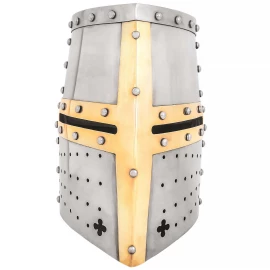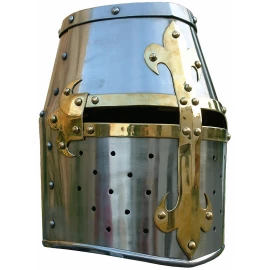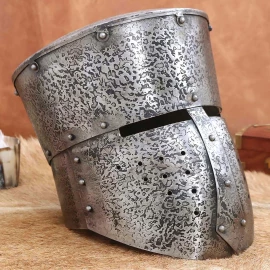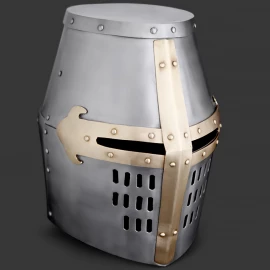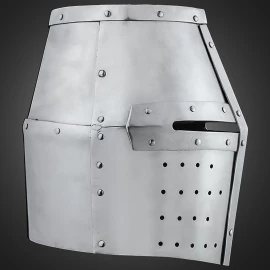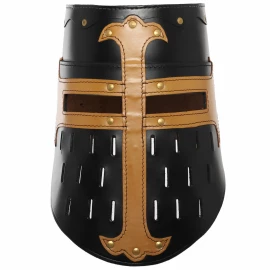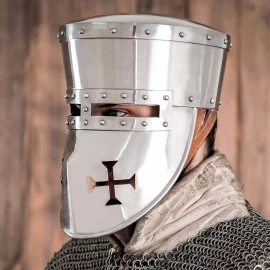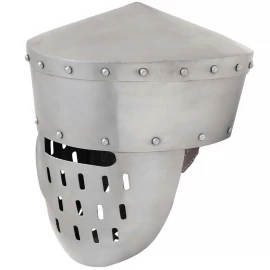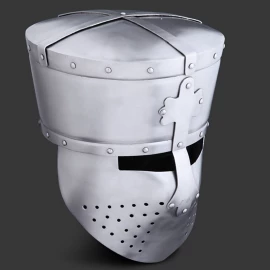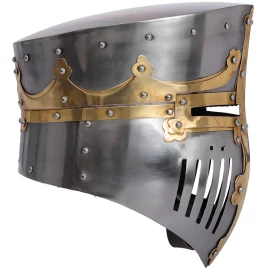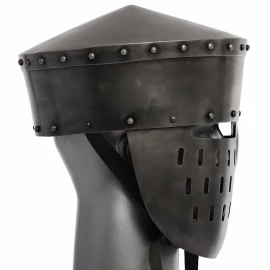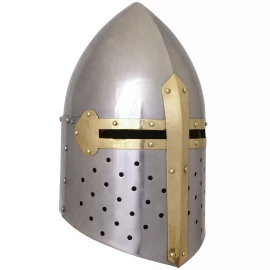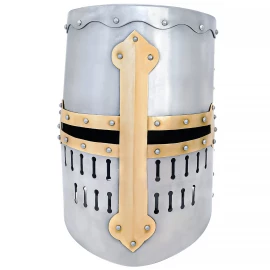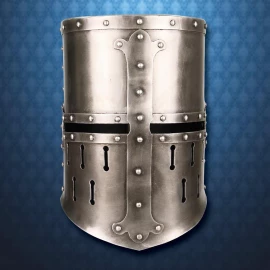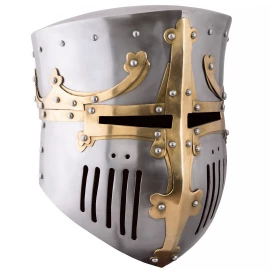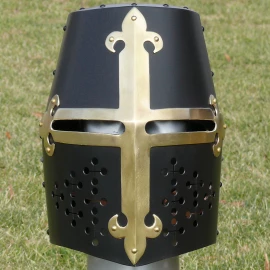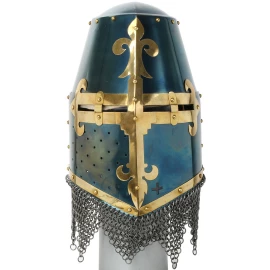Sugar Loaf Bucket Helm Nantelm 1.6mm steel, 1st half 14th century
This bucket helm from the first half of the 14th century is decorated and reinforced on the front with a cross and distinctive mushroom rivets all around. Almost the entire front length of the helmet has a prominent visor for good visibility. Round ventilation openings are drilled in the lower part to ensure sufficient air supply. The specially created surface gives the impression of a medieval patina. More information...
Sugar Loaf Bucket Helm Nantelm 1.6 mm steel, 1st half 14th century
The so-called bucket helm appeared at the beginning of the 14th century. It was similar in size and construction, as well as in decoration and use, to the great helmet. It differed in that its top did not end in a flat top but was forged into a more or less rounded bowl that was more resistant to blows. In the 14th century, head protection was finally separated from chain mail by a chain mail hood. The knight wore a heavy, closed bucket helm in battle. However, due to its heavy weight, it could not be carried for long. Therefore, the knight used other types of helmets of lighter construction (e.g. bascinet). Bucket helms were probably used in battles up until the second half of the 14th century. Then, thanks to their effective but uncomfortable head protection, they were no longer worn in battle and only evolved as tournament helmets. In our countries, in Latin it was called Helm, Helmelin, Galea, then Heaume, Hiaumet, Yaume, Elme, and the like. Bucket helms and their construction is known very well. These magnificent helmets, often with crests and covers, were also quite often used as funeral helmets. With all heraldic attributes, they were carried along with the shield in the funeral procession and then hung over the nobleman's grave. Thanks to this, some of them have survived to this day.
- Antique Steel Finish
- Padded cotton liner
- Leather chin strap with brass buckle
- Head circumference incl coif max. approx. 68cm
A high-quality product made by Lord Of Battles®
Write to our specialist







